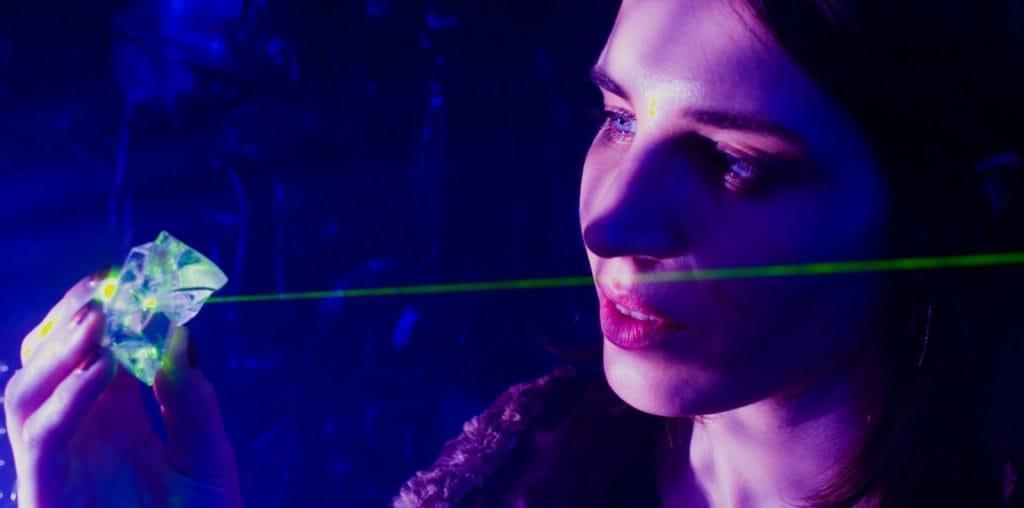
Fans and scholars of 1970s cinema are probably in disbelief over the fact that it’s taken Gene Hackman and Dustin Hoffman this long to finally team up. With all of the powerhouse performances they gave in that decade and subsequent decades after, you’d think they would have crossed paths one way or another. But they’re here and while the result of “Runaway Jury” is a little uneven, they are two of the major highlights of a film that’s smooth entertainment and not to be taken further than that.
The movie, based on the novel by John Grisham, but changed from tobacco to the gun industry, has many top-notch players. John Cusack, the everyman actor, plays Nicholas Easter, who we first see being surveillanced unknowingly by two goons, one with a camera. These “goons” belong to Rankin Fitch (Gene Hackman) a jury consultant who was hired by the leaders of the gun industry to insure that he picks a jury that will be sympathetic to the gun industry and therefore prevent them from having to open deep pockets and shell out millions upon millions of dollars. On the other side is Wendell Rohr (Dustin Hoffman), the attorney for Celeste Wood (Joanna Going), whose husband (Dylan McDermott in a cameo) was gunned down at his brokerage firm by a failed trader, and who believes that the gun industry should also be held responsible for what happened. After director Gary Fleder establishes both sides, the fun begins.
For Rankin, this is a time to go through photos, files, and surveillance video of all potential jurors, demonstrated by some frenzied editing of sound and picture by William Steinkemp. This is his moment to shine, and shine he shall for the good money that’s being dished out to him. However, Fitch runs into trouble because Nicholas Easter, whom he and his crew know nothing about, has been accepted on this jury, after being chewed out a bit by Judge Frederick Harkin (Bruce McGill) for his talk about wanting to skip jury duty for a video game tournament involving the football game, Madden Challenge. Civic duty rules in Harkin’s courtoom and he takes no s**t, either from the jury, or from the lawyers.
With the jury selected, populated by the likes of characters played by Bill Nunn, Cliff Curtis, and Luis Guzman in an uncredited role, it’s time to proceed. While the jury is being fed testimony from both sides, the puppet-string pullers are hard at work. Fitch watches the jury like a hawk, and Easter has his female accomplice Marlee (Rachel Weisz) working with him to accomplish some unclear goal, made clear by the ending, which may wrap up things a little too cleanly for some.
And that’s the framework of the picture. Within this, there’s so much to watch. Gene Hackman screams and gnashes his teeth and really seems to work Fitch as best as he can. Granted, he may be given more screen time than Hoffman, but with Hoffman, we can pretty much tell where he stands. He wants the verdict that will give his client what she deserves. He’s a good, honest man made even more so by a decision he makes toward the end of the film that ties into the twist. So Hackman is the one to study here. What makes a man work like this? There’s no deep psychological explanation, but Hackman really tells, via the script, some reasons of why he is what he is.
Cusack and Weisz have a fairly good chemistry together and Weisz holds her own as a woman who’s sarcastic when she needs to be, especially toward Fitch who can’t believe that this is actually going on, and pegs Marlee as an amateur. Amateur or not, Marlee certainly knows how the game works. Cusack is your usual everyman, and that’s his key strength because with that, you don’t think much would be going on with him with this case.
The scene, which will probably be discussed on the Monday after this film comes out, around the water cooler and such, is the two titans of acting coming together, face-to-face. Hackman and Hoffman have a scene together in the men’s room of the courthouse where they argue about morals and what they believe is right and it’s a powerful bit of work, considering how far these two have come. It’s no wonder they’ve already chosen another film to work together on.
However, there is one quibble to go over. At one point, when the pieces begin to come together about what Easter and Marlee’s intentions really are, Fleder tends to rub our faces quite thickly into the final puzzle piece. This may make many people uncomfortable, but I found myself wishing that he would cut it already. We understand why this is happening, but it doesn’t need to be told as long as it is already.
Outside of that, the film runs nicely. It’s a crisp piece of entertainment that was worth waiting for, considering that I’ve been waiting quite a long time to see this ever since reading the book. And how does it compare to the book? The obvious had to happen with certain moments being cut for dramatic effect, but the screenwriters had it right in switching the topic from tobacco to guns. Considering what Big Tobacco went through as the film was developed, this was the right way to go.
